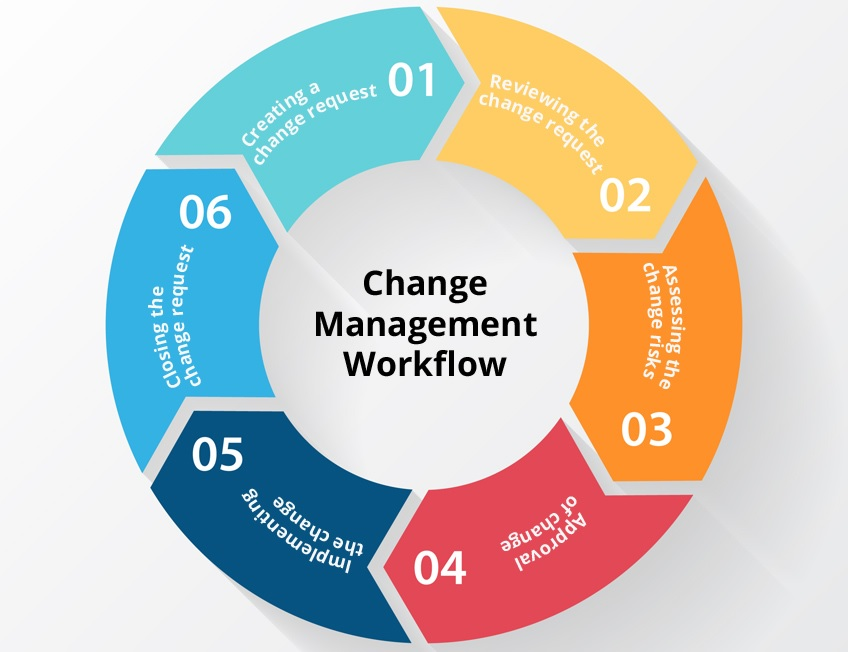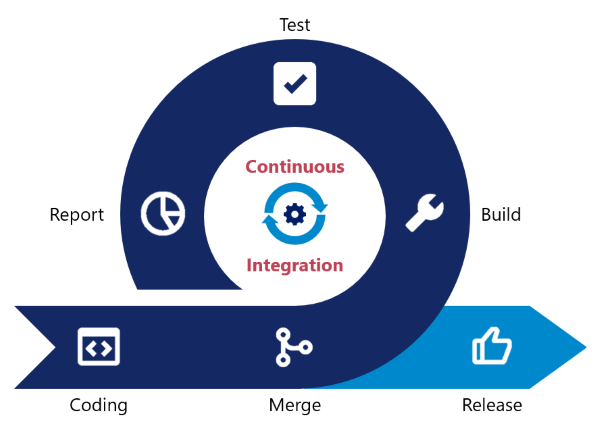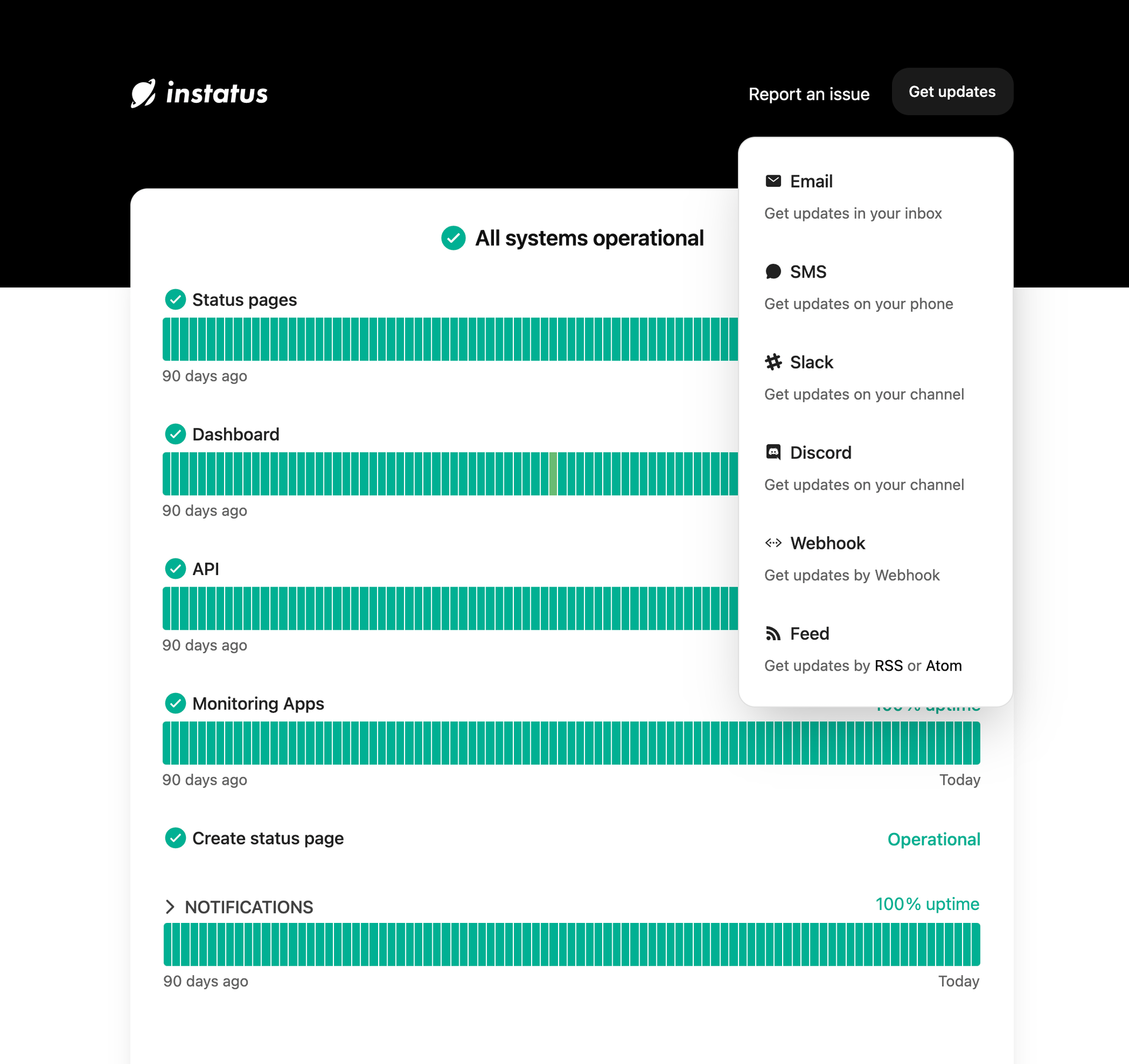A Step-by-step Guide to Applying Change Management in DevOps

Welcome, software enthusiasts and tech maestros. Today, we'll discuss a rather complex and crucial aspect of DevOps strategy – change management. This topic may not be as straightforward as some others in the field, but it's essential nonetheless.
Change management, in the simplest terms, is a structured approach to transitioning individuals, teams, and organizations from a current state to a desired future state.
As anyone who's dabbled in software creation knows: change is like a Nicolas Cage film – it's challenging, occasionally frustrating, and it can cause you to start questioning your life choices!
But worry not – this article from Instatus is your golden ticket, your secret map to navigating the maze of DevOps change management. And we promise to make it as engaging as possible. Yes, you read that right. Engaging! Let’s get started.
What is DevOps change management?
DevOps is an approach where the development (Dev) and operations (Ops) teams unite to accelerate the creation and delivery of software products. It's like a well-oiled machine with all parts working together to produce winning results.

Change management within DevOps is a structured approach for handling alterations within a development cycle. These can be modifications, upgrades, or updates that need to be integrated into the software without causing system issues or customer inconvenience.
Think of change management as the quality check in the DevOps assembly line. It verifies every proposed change, evaluates potential risks, and deploys updates without causing disruption. It's a balancing act that ensures the smooth running of DevOps best practices.
Why is DevOps change management important?
Changes, whether small updates or massive system overhauls, have significant impacts on your DevOps processes. Alterations can affect system performance, functionality, and stability. With that in mind, let’s delve into its benefits:
- Promoting autonomy for swift decision-making: Traditional IT practices often rely on decision-making bodies, like Change Advisory Boards (CAB), to approve changes. While valuable, this process can be slow. Modern DevOps projects deliver a speedier approach that lets individuals make decisions about changes – with daily reviews from experts.
- Risk mitigation: Change management's primary function is to minimize risk when rolling out new changes. By carefully evaluating each proposed change and its potential risks, change management plays a role in preventing unforeseen disruptions that can lead to downtime or degraded service.
But, even with the best-laid plans, disruptions can happen. That’s where Instatus comes into play! With swanky status pages that give your DevOps team and customers instant notifications, Instatus is your trusty sidekick that doesn't throw a wrench in your customer experience.
- Boosts compliance: Change management ensures system changes stay within regulatory guidelines and internal rules. This process reduces the risk of stepping out of line or facing legal hiccups. It's like keeping a handy folder of all system changes and DevOps certifications, promoting transparency, and holding everyone accountable.
As you can see, change management mitigates risks, enhances product quality, and fosters continuous improvement – all while guaranteeing smooth operations and optimal software delivery.
How to implement change management in DevOps
Implementing change management within your DevOps framework might seem daunting, but fear not! Here's a step-by-step guide to simplify the process:
1. Engage with your audit/compliance team
As we mentioned earlier, compliance is a vital feature of change management. So spark up a conversation with your audit/compliance team. This isn't just about ticking boxes on a checklist – it's about understanding their requirements and perspectives.
Start by asking some targeted questions like:
- Why do you need the change information?
- What will you do with the changed information?
- What level of detail do you need about the change?
- When do you need this change information?
By speaking the same language (hello, audit-speak!) and asking the right questions, your team can align their goals more efficiently. Remember, it's about finding solutions together and using the best DevSecOps tools, not entering the discussion with preconceived notions.
2. Stress learning before implementing rules
Remember, every company has a unique rhythm when it comes to change, and individuals dance to their own beats. Implementing change management within your DevOps is akin to conducting an orchestra, striking the right tempo that suits all players.
During the DevOps adoption process, make it a priority to listen to your employee’s opinions on how you should make this change happen. Encourage a learning-from-mistakes culture rather than a rigid rule-following regimen. As the age-old saying goes, “Teamwork makes the dream work!”
3. Harness helpful templates
With engineering and operations teams collaborating for efficient software delivery, proactive risk assessment and change management become indispensable. A useful way to streamline this process is to employ change management templates.
Thankfully, there are numerous templates at your disposal:
- An AWS architecture diagram template – Offers a visual guide for your cloud setup.

- A workweek template – This helps identify priorities, establish boundaries, and cultivate an efficient workweek that brings satisfaction.
- Instatus status pages – By keeping customer communication lines open and transparent, Instatus ensures changes and system downtime don't surprise your users.
These templates streamline how your team handles changes, making the process more efficient and manageable. The initial step involves planning for data migrations. Next, strive for continuous delivery in the DevOps lifecycle. Lastly, evaluate the performance of your change management process.
4. Adopt DevOps change management tools
DevOps change management tools – underpinned by automated processes and robust policies – ensure a consistent approval mechanism throughout the DevOps cycle. This improves code integrity, enhances release stability, and increases deployment frequency.
These tools introduce approval workflows for new code and maintain a comprehensive audit trail for each change – including documenting testing procedures and post-release analytics. Here are a few notable DevOps change management tools, each with its unique features:
- Amazon Systems Manager: This tool provides a consolidated user interface so you can view operational data from various AWS services and automate operational tasks.
- Rundeck: Rundeck is an open-source runbook automation for incident management and business continuity.
- Ansible: Ansible is a suite of software tools that enables infrastructure as code, automates your infrastructure, and deploys applications quickly.
By harnessing the power of these tools, your organization can streamline DevOps change management, making it more effective and efficient.
5. Implement continuous integration
Continuous integration (CI) is a way to make sure your code is always ready. It blends the tools and processes of configuration management, testing, and development so that everything works together seamlessly.
CI helps spot and fix problems in your code by keeping the line of communication open between the people who write the code and those who test it. For more information, dive into our article, “Top Monitoring Tools for DevOps for Every Need.”

Through CI, glitches, hitches, and bugs in the code are spotted in no time, thanks to the constant exchange of insights between the code creators and the testing gurus. Resulting in a low mean time to detect (MTTD) and a faster mean time to resolution (MTTR).
By adhering to this guide, you’ll be well-equipped to incorporate effective change management into your DevOps. So, get ready to embark on this thrilling journey toward development and enhancement!
Best practices for DevOps change management
Change management in DevOps is not just about implementing tools, it's about adopting a mindset that values collaboration and adaptation. To help you navigate this journey, we've rounded up some best practices that can set you on the right path:
- Embrace Agile and DevOps principles: Embracing an iterative approach and automation is the key to streamlining performance. It's crucial to harness technology, from automating processes to offering employees e-learning resources. This helps your team understand the mechanism of changes, maximizing their potential benefits.
- Distinguish between change types: Understand that changes vary in impact. Applying DevOps principles allows for automated handling of each change type, improving lead times and reducing blockers. For example, automating documentation processes can prevent delays in crucial fixes.
- Break down development into smaller parts: Managing change becomes more straightforward when tackled in smaller increments. DevOps practices typically divide code into modules and develop them batch by batch. This method eases the integration, testing, and deployment of code modifications.
- Embed DevOps practices throughout your organization: As more businesses transition to cloud-based solutions and increase their development initiatives, DevOps becomes indispensable for eliminating silos and managing change. By integrating DevOps methodologies, organizations stay ahead in their digital transformation journey.
When it comes to overcoming challenges in change management, remember to have a little patience. Changes won't happen overnight, but with a consistent approach and a commitment to continuous improvement, you'll see progress soon enough.
Wrapping up
By adopting practices like fostering communication with audit/compliance teams, harnessing DevOps change management templates, and promoting continuous integration, you’re creating a conducive environment for change to take place.
With these principles in your back pocket, you'll be well-positioned to navigate the ever-evolving landscape of DevOps. To further boost your journey, consider innovative tools like Instatus.
With our reliable monitoring notifications, we enable teams and customers to react quickly so no one is left in the dark! Our stylish status pages guarantee a smooth and uninterrupted service, so get your free status page today!
Get ready for downtime
Monitor your services
Fix incidents with your team
Share your status with customers



